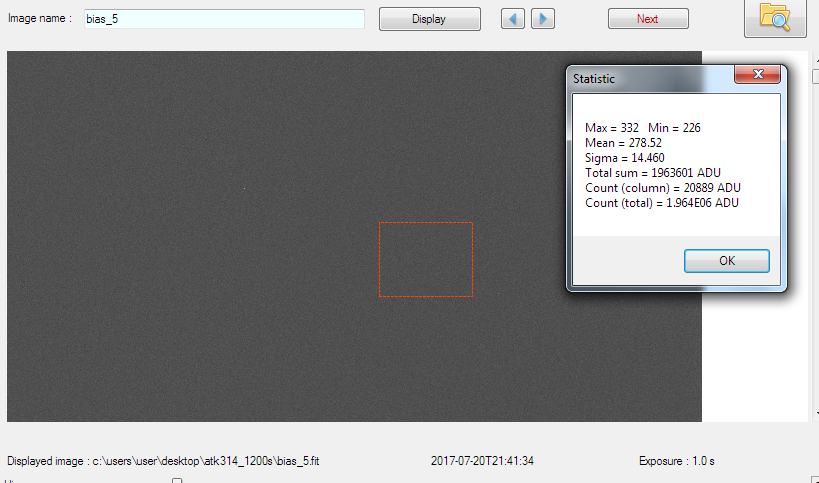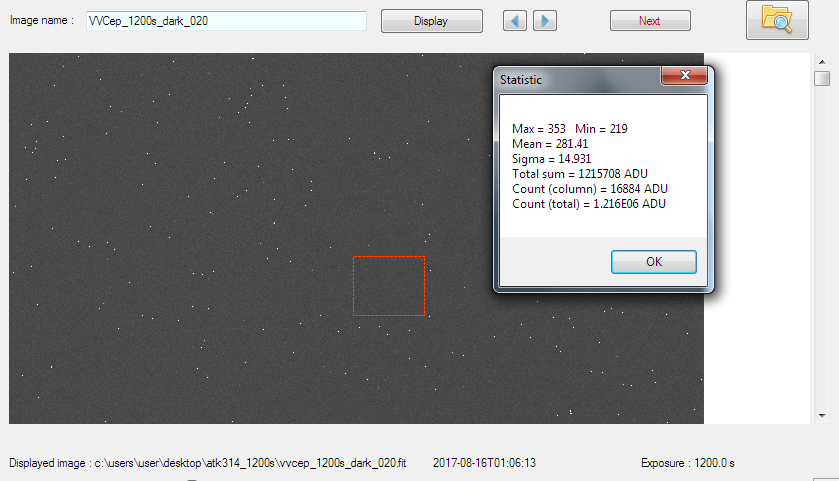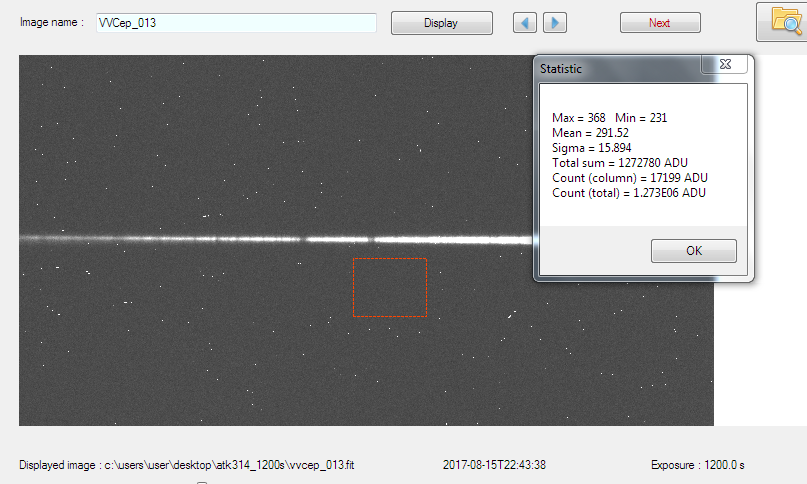Hello Christian
Christian Buil wrote:Robin, if the readout noise dominate thermal noise and background noise for a one-hour exposure, for a precise estimation of the detectivity I recommend to take a pair of 3600 seconds exposure (in real conditions, with the background illumination) and compute the difference. In the différence, check if the readout is really dominate.
I am not sure I will get 2 hours of darkness here until autumn now

but I do have a comparison at 1200s. Attached are typical bias, 1200s dark and 1200s star exposures. (I have not measured the differences yet but I think the effect is already clear) The measurement is in the blue using the LHIRES with 1200l/mm grating and ATIK 314 camera 2x binned. (The sky background would be even lower with a 2400l/mm grating unbinned)
Bias sigma = 14.5 ADU (which at 0.28e-/ADU = 4.1e- ie the read noise of the ATK314)
1200s dark sigma = 14.9 ADU (The thermal signal is very low with the ATK314 and makes almost no contribution to the total noise in 1200s)
1200s sky sigma = 15.9ADU. (Here we see a small contribution to the noise from the sky in 1200s but the read noise still be significant)
Even at 3600s I think it is clear that the read noise will still be significant
By definition, the signal noise of the star is very near zero in limit magnitude conditions observation (choose a faint star of course).
Perhaps I do not understand properly but your example shows ~3000 ADU counts/channel from the star and ~50 ADU/channel sky noise. I do not know the gain of your CMOS camera but if it was 1 e-/ADU for example the photon noise would be sqrt(3000) = 55 ADU which is as big as the sky noise.
Cheers
Robin

- bias_noise.png (239.82 KiB) Viewed 6172 times

- 1200s_dark_noise.png (227.58 KiB) Viewed 6172 times

- 1200s_sky_noise.png (230.21 KiB) Viewed 6172 times
